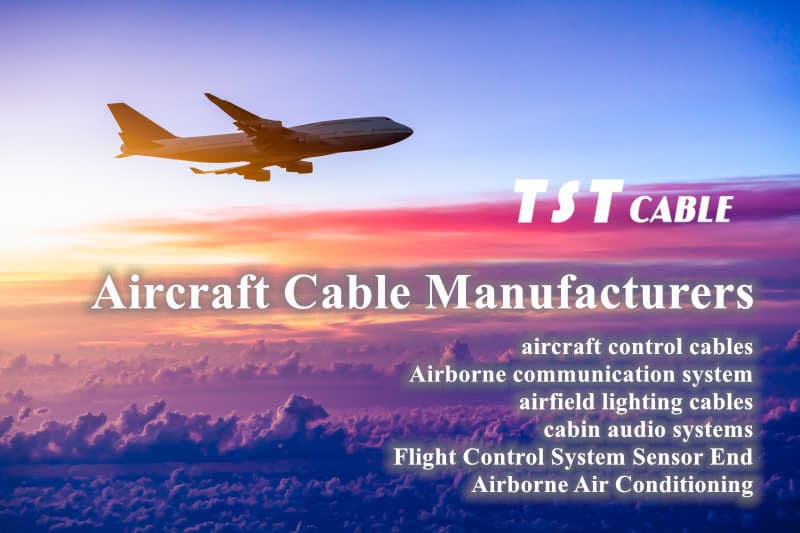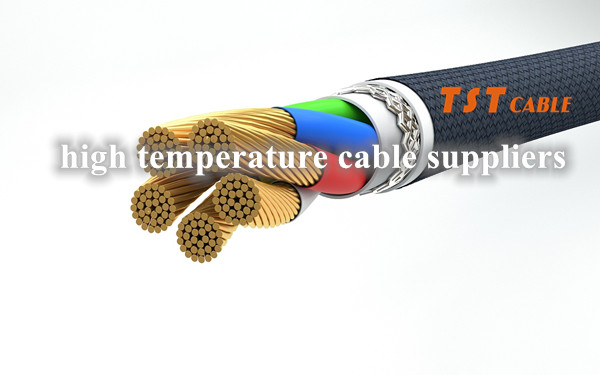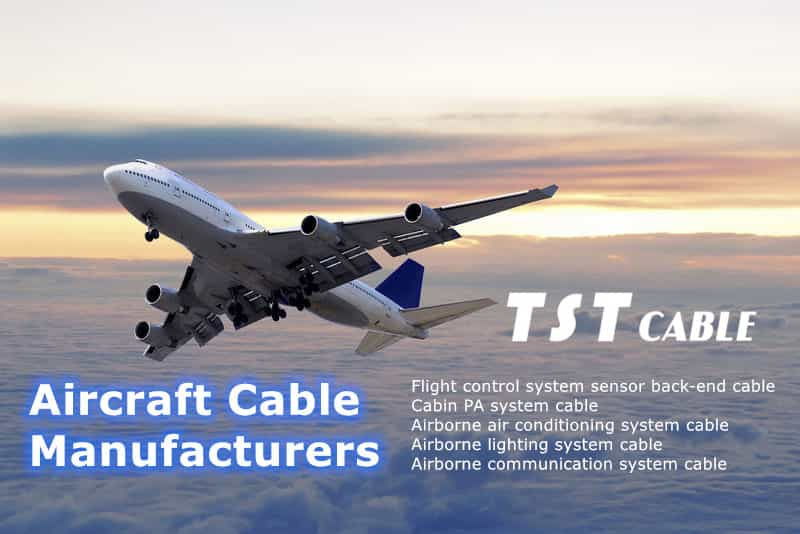AF200 aviation high temperature cable is a kind of high performance cable designed for aerospace and other high temperature, harsh environment.
A, AF200 aviation high temperature cable basic composition and specifications
Conductor: tinned copper wire or silver-plated copper wire is usually used as the conductor, these materials have good electrical conductivity and high temperature performance.
Insulator and outer cover: are made of polyperfluoroethylene propylene (FEP) material, which has excellent high temperature resistance, corrosion resistance and flame retardant properties.
Rated voltage: typically 600V, suitable for high voltage environments.
Temperature range: It can usually work normally in a wide temperature range from -40℃ to +200℃ (or higher), which meets the requirements of aerospace field for the use of cables in extreme temperature conditions.

Second, AF200 aviation high temperature cable product characteristics
Thermoplasticity: AF200 cable is a thermoplastic product, which is easy to process and install.
Corrosion resistance: able to resist the erosion of acid, alkali, oil and other corrosive substances.
Flame retardant: It has good flame retardant performance, which helps to improve the safety of use.
Lightweight and soft: the cable is lightweight, small and soft, which is convenient for wiring in places with limited space such as aviation spacecraft.
Third, AF200 aviation high temperature cable application areas
AF200 aviation high-temperature cable is mainly used in the aerospace field, especially in the need for high temperature, high voltage and harsh environmental conditions for stable transmission occasions. In addition, it may also be used in other industrial fields that require similar performance requirements.
AF200 aviation high temperature cable is a key component in high temperature industries such as aerospace with its excellent high temperature resistance, corrosion resistance and flame retardant properties.
AF200 aviation high-temperature cable products have heat radiation resistance, cold resistance, acid, alkali and corrosive gases, waterproof and other characteristics, the cable structure is soft, easy to radiate, high-temperature (high-cold) environment of the electrical performance is stable, soothing the aging performance is outstanding, long service life, excellent high-temperature resistance to low temperatures, excellent electrical insulation properties, excellent chemical stability properties, resistance to high voltages, aging resistance, long service life It has excellent electric insulating properties, excellent chemical stability, high voltage resistance, aging resistance and long service life. And soft and easy to install, widely used in metallurgy, electric power, petrochemical, electronics, automobile manufacturing lighting, lamps, household appliances, electrical heating appliances, instrumentation, motor lead wires and electronics, lamps, lighting, combustion appliances and other high temperature environment and other industries.
(1)FF46-1(AF200-1 tinned)
(2)FF46-2 (AF200-2 silver plated)
(3)FF46-3 (AF200-3 nickel plated)
(4)FF4-2 (AF250-2 silver plated)
(5)FF4-3 (AF250-3 nickel plated)
Fourth, the analysis of the design and performance of AF200 aviation high temperature cable:
- Material selection:
Conductor materials: usually choose copper, aluminum and other excellent conductive materials to ensure high current transfer efficiency.
Insulation materials: need to choose materials with good heat resistance and electrical insulation properties, such as cross-linked polyethylene (XLPE), silicone rubber and so on.
Sheathing materials: sheathing materials should have high temperature resistance, corrosion resistance, wear resistance and other characteristics, common materials include polyvinyl chloride (PVC), fluorine plastic and so on.
- Structure design:
Single-core or multi-core: single-core or multi-core structure can be selected according to specific needs, and multi-core structure is suitable for multi-way power transmission.
Shield design: For high temperature cables that need to be anti-interference, a shield can be designed to reduce the impact of external electromagnetic interference on the signal.
- Heat-resistant performance:
Temperature class: high temperature cables are usually classified according to the heat-resistant temperature class, such as 70 ° C, 90 ° C, 105 ° C, etc., according to the specific use of the environment need to choose the appropriate temperature class.
Thermal stability: the material needs to have good thermal stability to ensure that the high temperature environment is not easy to aging, deformation or failure.
- Safety performance:
Flame retardant properties: high temperature cable materials should have good flame retardant properties to ensure that in the event of a fire will not contribute to the fire.
Corrosion resistance: It is necessary to consider the corrosion problems that cables may face in high-temperature environments, and select corrosion-resistant materials or take anti-corrosion measures.
Performance testing: high-temperature cables need to be designed after the completion of a variety of performance tests, such as conductivity test, insulation test, heat resistance test.
Certification standards: usually need to meet the relevant national or industry certification standards, such as IEC International Electrotechnical Commission standards, UL U.S. Safety Laboratory standards.
TST CABLES performance testing and certification:
TST CABLES AF200 Aviation High Temperature Cables The design and performance of high temperature cables directly affect their stable operation and safety performance in high temperature environments, and need to fully consider the selection of materials, structural design, heat resistance, safety performance and other factors, to ensure that it meets the application requirements and passes the relevant certification standards.
Also available in:
English





